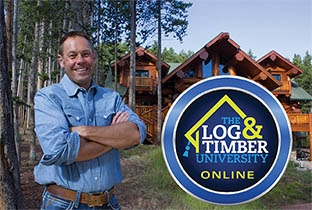
By Patricia Strutz
We’ve all been told we should keep receipts and take photos of newly purchased furniture. But, from an insurance standpoint, are we truly prepared when a catastrophe strikes? If a tornado damages your cabin, are you sure your policy covers it? The following pointers are based on insights from experienced insurance adjusters.
Preparing for the Worst
The most effective way to prepare for possible catastrophic storm damage is to review your coverage with your agent annually and update your policy as needed.
For starters, discuss the different types of policies – homeowners vs. dwelling-fire, replacement cost coverage (RCC) vs. actual cash value (ACV), open peril vs. named peril. (See “Policy Types” below for definitions.)
Be sure your policy reflects all your current buildings and structures, their contents and your needs. Consider exclusions or limitations on items of value.
And ask about endorsements. Do you have a sump pump rider to cover sewer back up or flooding in your basement from sump pump failure? If you have an older vacation home, do you have an ordinance and law rider? Such coverage pays not only for rebuilding a destroyed cabin but also for upgrading it so that it will conform to current building codes.
Here are some specific questions to ask your agent now:
Does my cabin community participate in the flood program?
Even if your cabin isn’t in a flood plain, flooding can be a threat. And surface water and flooding are excluded from homeowners policies. Depending on where your place is located, you may qualify for flood insurance through The National Flood Insurance Program and/or private insurers. And be sure to ask if your secondary home is covered for ACV or RCC.
What is my landscaping coverage?
Storms can wreak havoc on those towering white pines surrounding your cabin. Most policies limit coverage of trees to only a few named perils such as fire, lightning and vandalism. When a covered peril occurs, the liability is often limited to $500 per tree, though some companies have a $500 aggregate limit. Different carriers provide endorsements for tree replacement or removal; discuss your landscaping coverage with your agent.
Note: If the wind blows a tree over into your yard and it doesn’t hit anything, there’s generally no coverage. If the tree topples over onto your cottage and causes roof damage, most policies will pay for whatever amount is reasonable to remove the tree off the structure – even if it requires a crane for thousands of dollars. The crane expense is covered as part of the process to repair the cottage. If Bob’s tree topples onto neighbor Jim’s cabin, Jim’s policy pays for the tree removal and roof repair.
What is my coverage for outbuildings?
Damaged contents in outbuildings, such as fishing gear in a boathouse, are usually covered for named perils (the type of storm event must be listed in the policy). Watercraft coverage varies greatly; some policies exclude coverage if the boat is not kept in a building. If your boat is regularly tied to a pier, ask if it’s covered against wave and wind damage. Note: After a storm, three separate adjusters may inspect your loss – one for your property, one for your automobile and one for your watercraft.
How am I covered for hail damage?
Hail damage to siding usually affects only one elevation. Some carriers will solely repair the damaged areas; others will replace the entire elevation. If your cabin’s siding is no longer manufactured, some companies simply replace the damaged areas with “like kind and quality,” which may not be a perfect match. Find out what your insurance company’s policy is and if they offer endorsements to buy siding for the whole house if they are unable to match it.
How much roof coverage do I have?
Roof shingle damage is another common loss. Some carriers replace only damaged shingles, others will replace entire elevations. And again there’s the question of whether you’re insured for RCC or ACV.
What steps should I take to prevent wintertime damage due to power outages?
Power outages related to wintertime storms can cause pipes to burst. Freezing pipes are almost always covered losses if the property is occupied; it can be excluded if the property is vacant and preventive care was not taken. Ask your agent what are considered reasonable steps toward prevention. These may include shutting off the water supply, draining the plumbing system, leaving the heat on, and ensuring there’s an adequate level of propane or oil for the furnace.
Note: Policy definitions of vacant and unoccupied vary; be sure you are compliant with your policy’s expectations.
The Post-Storm Insurance Process
In a nutshell, this is how the post-storm insurance process rolls out: You will call your agent to provide them with a description of the damage. The agency will contact an insurance adjuster. The adjuster will call to set up an inspection appointment, during which they’ll document the damage by taking measurements, photos and notes. They’ll then head to their office to compile a report. A software program calculates the current local costs to fix the damage. Finally, your insurance company analyzes the report and sends a check to repair the covered losses.
What to Do After a Storm
After a storm, here are some steps you’ll need to take and some precautions to keep in mind:
-
Take immediate steps to protect your cabin from further damage (e.g., lay tarps over holes in the roof), once it’s safe to go outside. Keep receipts for materials purchased; most policies pay for temporary repairs.
-
Landlines are often inoperative; provide a cell phone number to your agent.
-
Prominently post your address so it’s viewable from the road.
-
It’s best to leave damage intact until the adjuster arrives. If this isn’t possible, take photographs before removing anything. Note: If you need to cut down the tree lying on your roof, keep track of your hours. Some policies will reimburse expenses – usually a reasonable amount to take the tree off the roof and up to $500 for debris removal.
-
Document damage with itemized lists and photos. Write down make, model and serial numbers.
-
If you have food spoilage from a power outage, don’t despair. Many policies offer food spoilage coverage. Take photos and create an itemized list before tossing the perishables. Include general prices of all items. For your fishing or hunting bounty, find equivalent prices at the local butcher shop.
-
Mitigate water damage by extracting the water, drying out the damaged area, and applying a mildewcide to curb mold growth. National Flood Insurance Program policy provisions typically cover these items; many homeowners contract these services through professional restoration companies.
-
Keep receipts for emergency lodging and meals because homeowners policies typically supply additional living expense (ALE) coverage for covered losses which make the home uninhabitable. ALE pays for lodging and meal expenses over what would be normally spent.
-
Hire reputable contractors who are licensed, insured, bonded and can provide local references. Keep every receipt.
Don't Void Your Coverage
Neglecting to take reasonable steps to avoid a loss or failing to maintain your property can void your insurance coverage. Take this example: Typical water damage covered by most policies includes water leaks from a storm-created opening – such as wind or hail damage to a roof. If your cabin had an opening in it prior to the storm, it’s likely the claim will be denied. When a faulty vent is the culprit of a roof leak, many homeowner policies will cover damaged dwelling items (attic insulation, ceiling drywall), but the vent repair and damaged contents, like den furniture, won’t be covered. Thus, it’s prudent to maintain your property.
Policy Types
- Homeowners: Typically provides the broadest range of property and liability coverage.
- Dwelling-Fire: Stripped down homeowners policy. Land and personal property generally aren’t covered.
- Replacement Cost Coverage: Cost to repair or replace damaged property at current construction cost without considering depreciation.
- Actual Cash Value: Cost to repair or replace damaged property at current construction cost minus depreciation.
- Open Peril: Provides coverage for any reason not specifically excluded.
- Named Peril: Provides coverage only for the perils listed.
Sources
-
Mariposa Insurance Services, Whitehouse, Ohio
-
Vale Training Solutions, Arlington, Texas
-
Eberl Claims Service, Lakewood, Colo.










